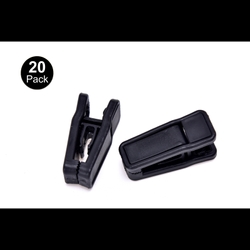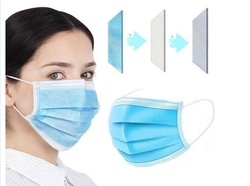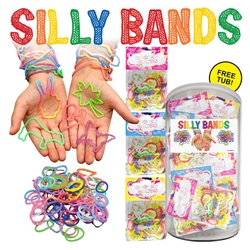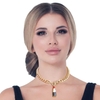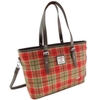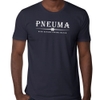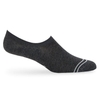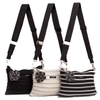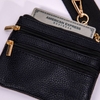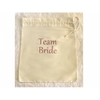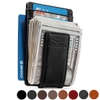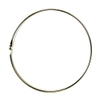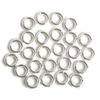
featured products
Recommended for you
Wholesale Apparel
Ever wondered what items Americans impulse buy the most from retail stores?
Here’s an interesting stat that answers this:
Driven by the latest trends and flash sales, a striking 35% of Americans make unplanned purchases of clothes and another 28% can’t resist a new pair of shoes.
Even books, technology, and coffee do not match the level of impulse purchases seen in these categories as per the 2022 data.
And this statistic on buying behaviour becomes even more compelling when you consider the projected growth of the global apparel market.
Recent forecasts reveal that the size of the apparel market will grow from its current USD 1.33 trillion to an impressive USD 1.67 trillion by 2028 with a CAGR of 4.63% between 2023 and 2028.
For those in the retail sector, these numbers are a clear indicator of growth opportunity.
They also suggest a potential for new entrants in the market and expansion for the existing ones.
And for wholesalers, the key lies in understanding the retail needs, ensuring timely supply, and keeping an eye on the latest trends.
Types of Products in the Apparel Category
Delving deeper into the specifics, you may realize that apparel is a diverse market that includes:
- Tops: Polo shirts, tank tops, graphic tees, blouses, sweatshirts, etc.
- Bottoms: Jeans, leggings, skirts, capris, shorts, chino pants, etc.
- Dresses: Maxi, mini, and midi dresses
- Outerwear: Sweaters, cardigans, jackets, blazers, coats, etc.
- Sportswear: Sports bras, workout sets, sports jerseys, etc.
- Sleepwear: Pajamas, nightgowns, etc.
- Specialty wear: Petite clothing, maternity clothing, plus-size clothing
- Footwear: Shoes, slippers, sandals, sneakers, boots, etc.
- Accessories: Hats, scarves, headbands, handbags, fashion jewelry, belts, ties, etc.
This diversity doesn’t mean having everything in your store. For retailers, it’s about having the right product mix that consumers are likely to explore and buy.
This raises a question:
How Do You Find Out the Best Products For Your Apparel Business?
Here are some tips for product selection:
Research Your Competitors
Take note of what other apparel brands (your competitors) are offering. Browse their web stores, product pages, social feeds, online reviews, etc.
This isn’t about copying their inventory, but about gaining insights into what’s popular with their customers.
Look For Seasonality
Consider products that you can sell throughout the year like handbags.
This doesn’t mean that you ignore the seasonal hot sellers.
For example, during the colder months, the demand for warm apparel items such as coats, gloves, boots, caps, etc. increases.
In the off-season, you can sell these products to customers in different regions where the demand may be higher.
Define Your Markup
This will help you estimate the potential profitability of your product.
Understand the cost of sourcing an item at wholesale price and decide on a selling price that offers value to your customers and profit to you.
For example, if you source 10 crop tops at a wholesale price of $12 ($1.2/unit) and they sell for $25/unit in retail stores, you can benefit from a huge markup.
Determine Your Unique Value Proposition (UVP)
Next, determine your unique value proposition — what sets you apart from other apparel businesses in the US.
This could be anything from offering sustainable, eco-friendly apparel to focusing on high-quality, hand-crafted items.
Remember, a strong UVP can make your business attractive to your prospective customers.
Capitalize on Trends
Whether you’re a retailer or wholesaler, you should keep yourself updated with the top trends to avoid having stock that doesn’t sell.
- Trend #1: Unisex Clothing
The demand for unisex clothes is rising due to changing customer perceptions of gender identity. People prefer to wear comfortable and trendy clothes regardless of gender expression.
In recent years, the increasing demand for cargo pants, boyfriend jeans, and T-shirts among both genders has marked a global trend toward embracing gender fluidity.
So, by stocking your shelves with unisex clothing items, you can broaden your customer base; plus there’s a potential for increased sales.
- Trend #2: Athletic Footwear
With consumers preferring convenience and comfort during physical activities, the demand for athletic footwear is growing. This presents growth opportunities for retail and wholesale businesses.
Here’s what a recent report says: By 2030, the worldwide athletic footwear sector is projected to grow beyond USD 196.5 billion (CAGR: 5%).
- Trend #3: Luxury Handbag
The luxury handbag market is witnessing substantial growth, driven by the increasing brand consciousness and the rise in disposable income.
In 2018, the market stood at $58.3 billion and is forecasted to hit $89.9 billion by 2026, expanding at a CAGR of 5.6%.
This upward trend paints a bright future for those in the handbag market. So, by building relationships with luxury handbag manufacturers, you can offer a diverse range to your customers and leverage this growing market.
Bonus Tip: In addition to these three trends, Google Trends could be a valuable tool for discovering the latest shopping trends in the apparel niche. Best of all, it’s FREE.
By just typing in your product category like “sleepwear” or a specific item like “tank tops,” you can filter your search and see what’s trending.
3 Marketing Tactics to Attract Customers to Your Retail Store
Establish a Strong Online Presence
In today’s digital landscape, neglecting this can mean missing out on a chance to reach more customers and increase sales.
So, establishing your online presence is crucial. Here’s how you can do it:
List your products/business on online marketplaces & directories
As a retailer, when you list your business on retail marketplaces and online directories, you can:
- Increase your reach and enter new markets
- Enhance your visibility so that more customers can find and contact you
- Boost your sales and revenue
Leverage Social Media Marketing
Using social media platforms can be an effective strategy for promoting your apparel items.
Regularly post high-quality images of your latest collection, customer testimonials, or behind-the-scenes shots to build a community around your brand.
Remember, when it comes to connecting with other apparel businesses, LinkedIn is great but for showcasing your products virtually, Facebook and Instagram can work better.
That’s because they have a “Shop Now” feature that can directly link customers to product pages.
Offer Discounts and Incentives
Offering discounts and incentives boosts conversion rates and builds rapport with customers.
No one wants to miss a chance when there is a 40% OFF on clothing items.
Also, you can offer unexpected rewards such as special bonuses and promo codes to retain customers while making them happy and satisfied.
Back to top
Copyright 2025 Seebiz Inc. All rights reserved



